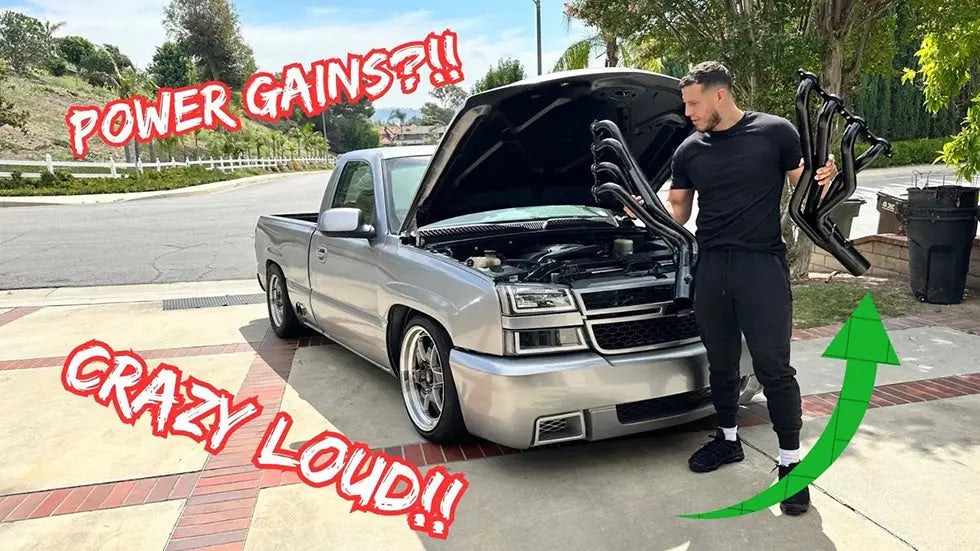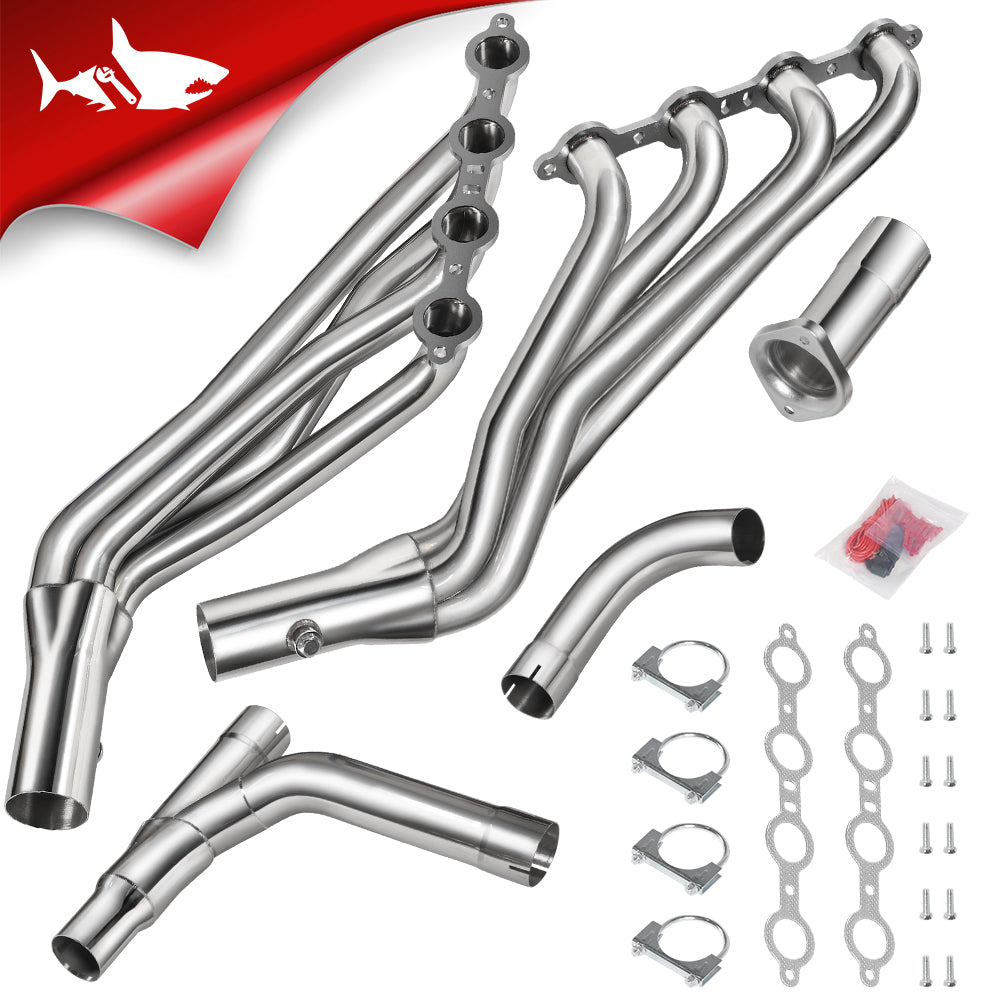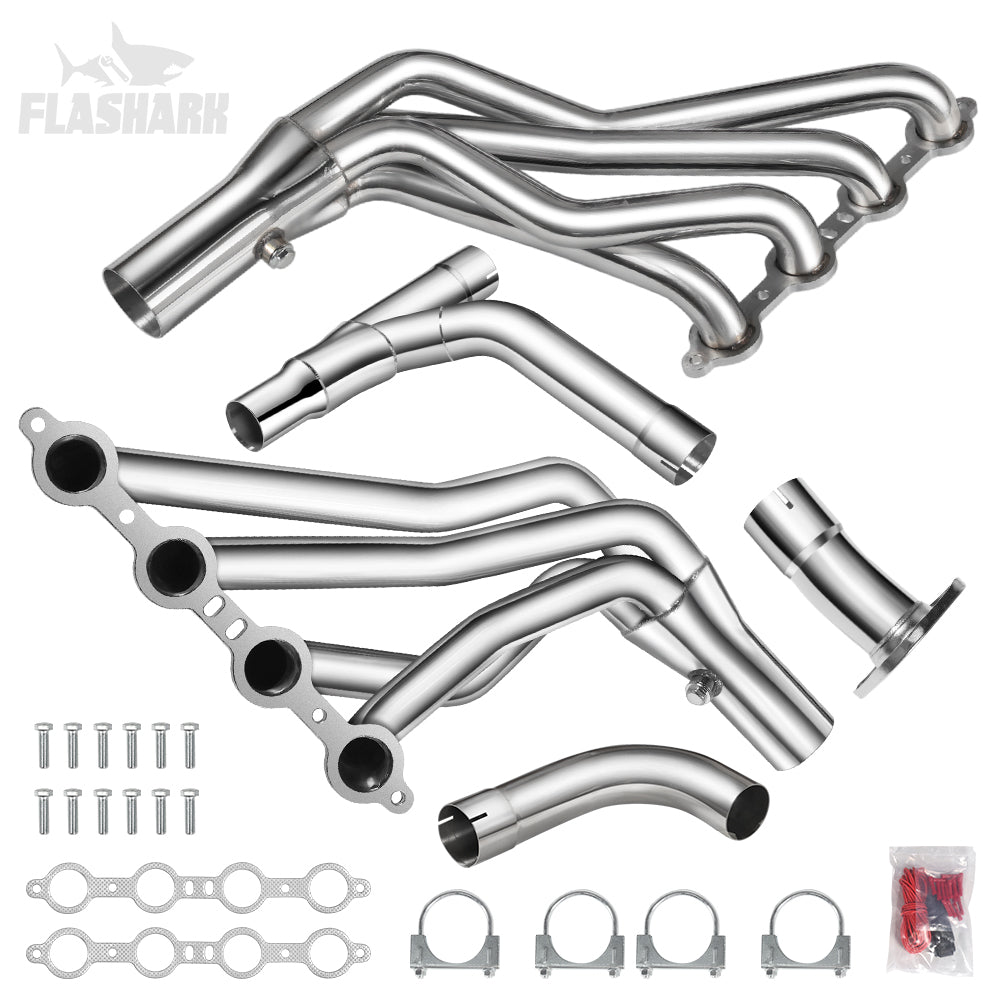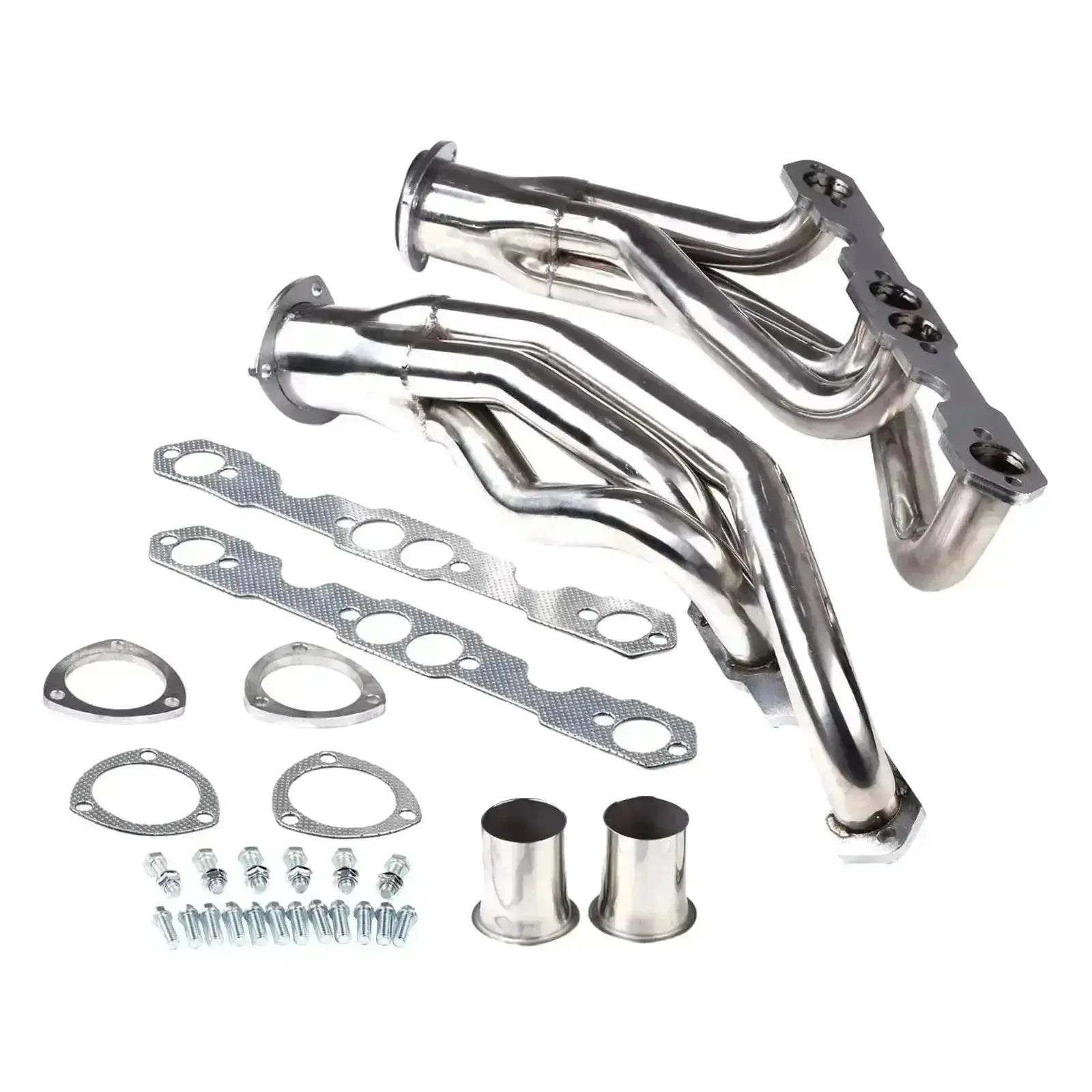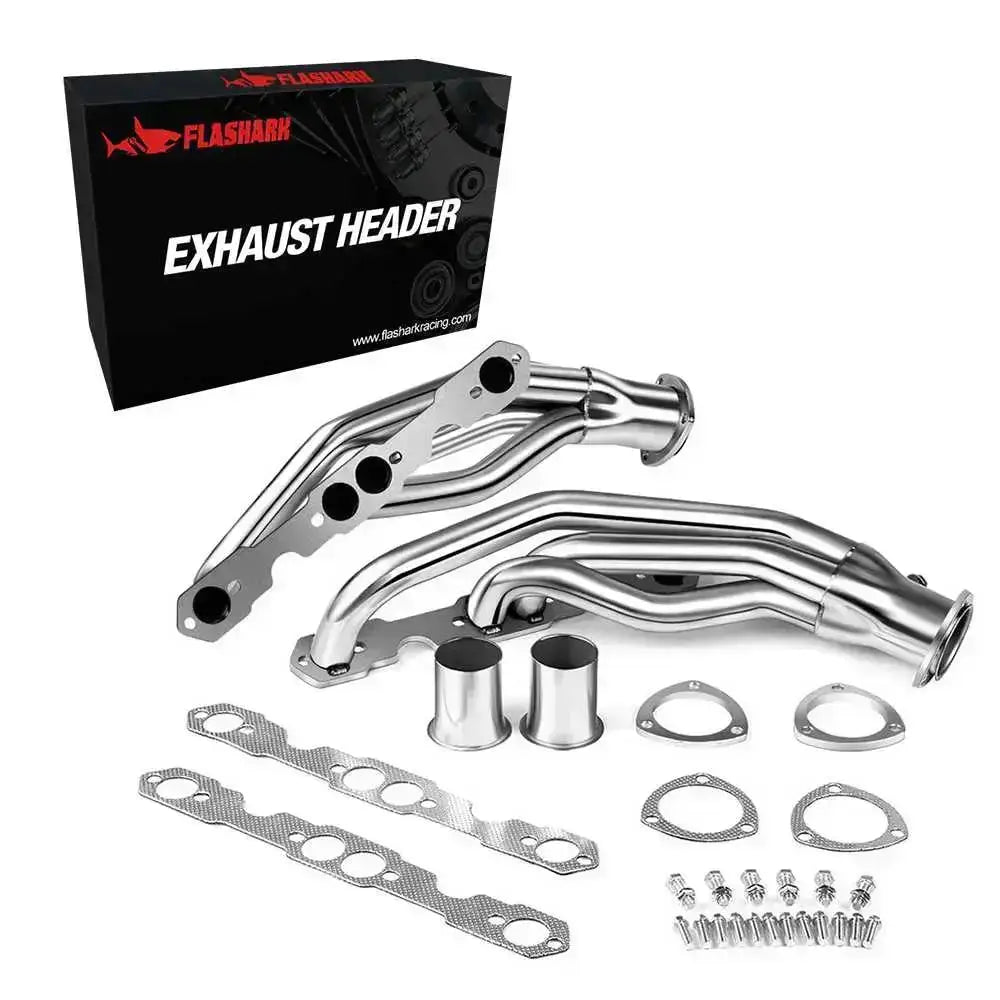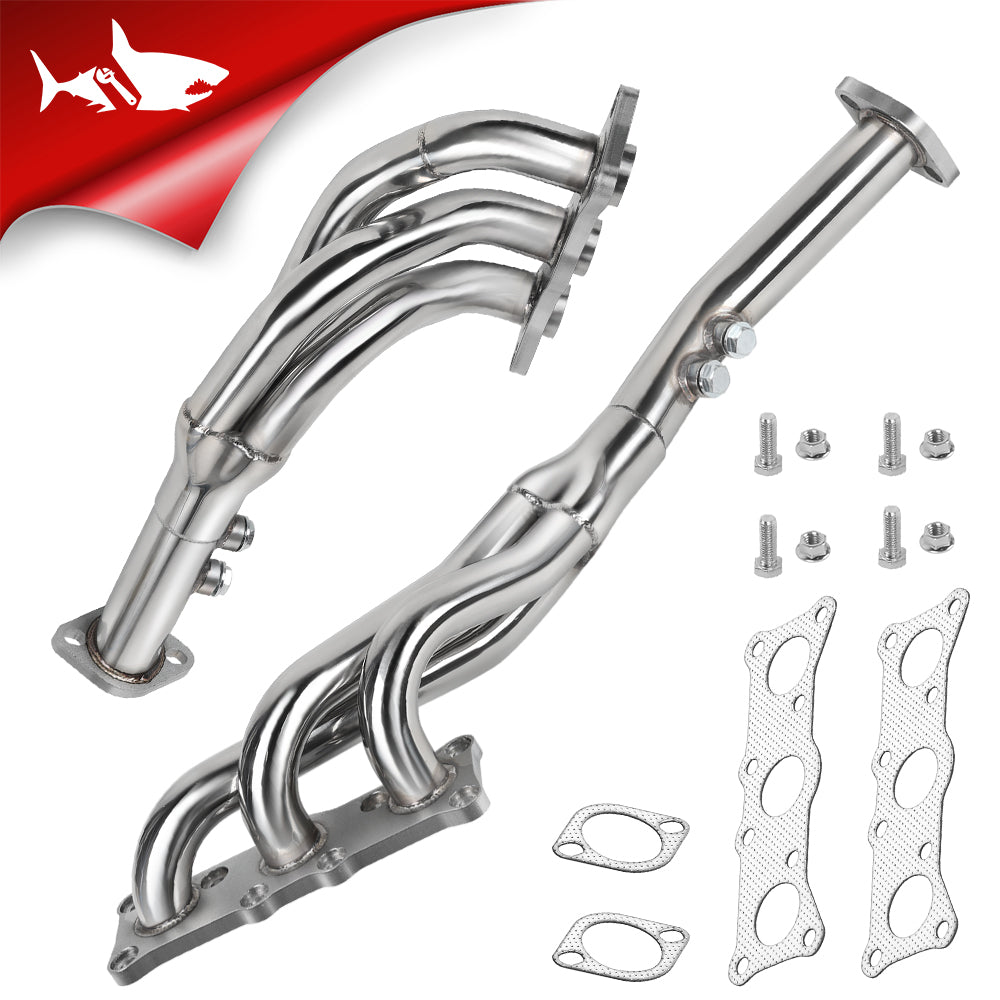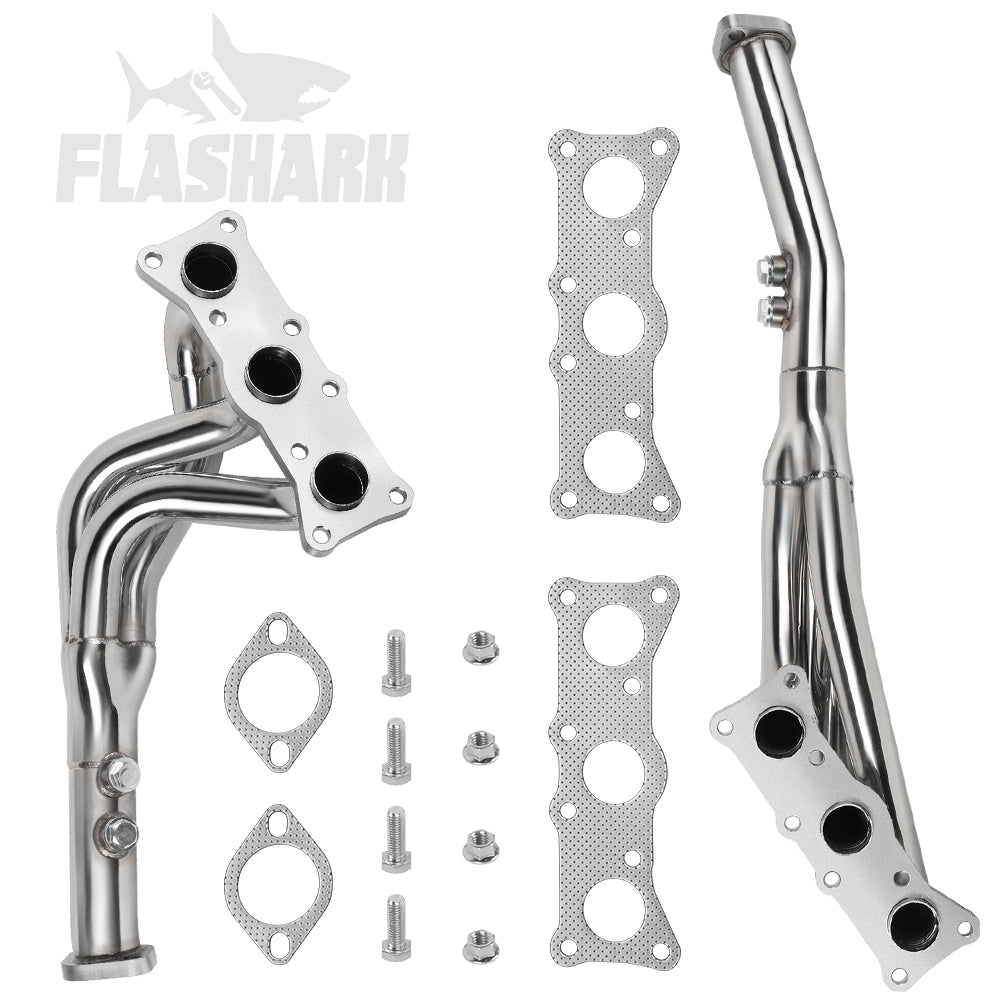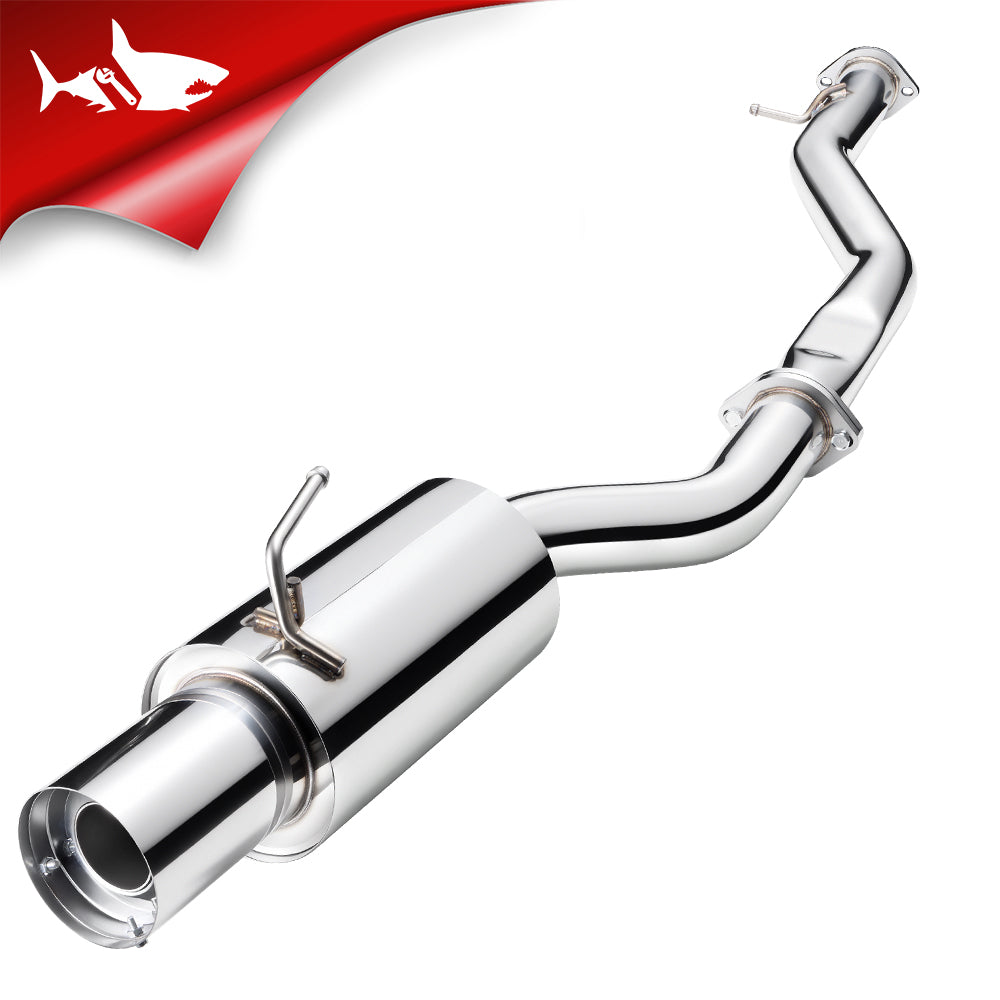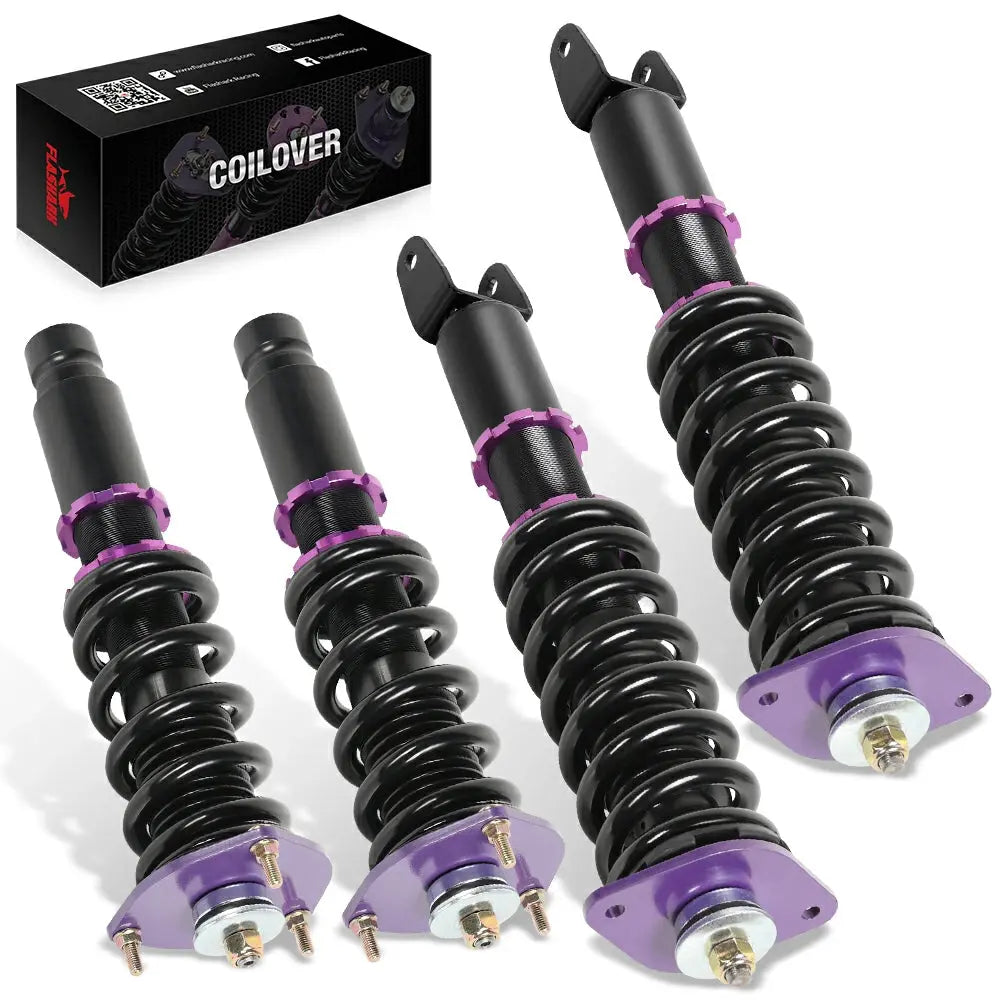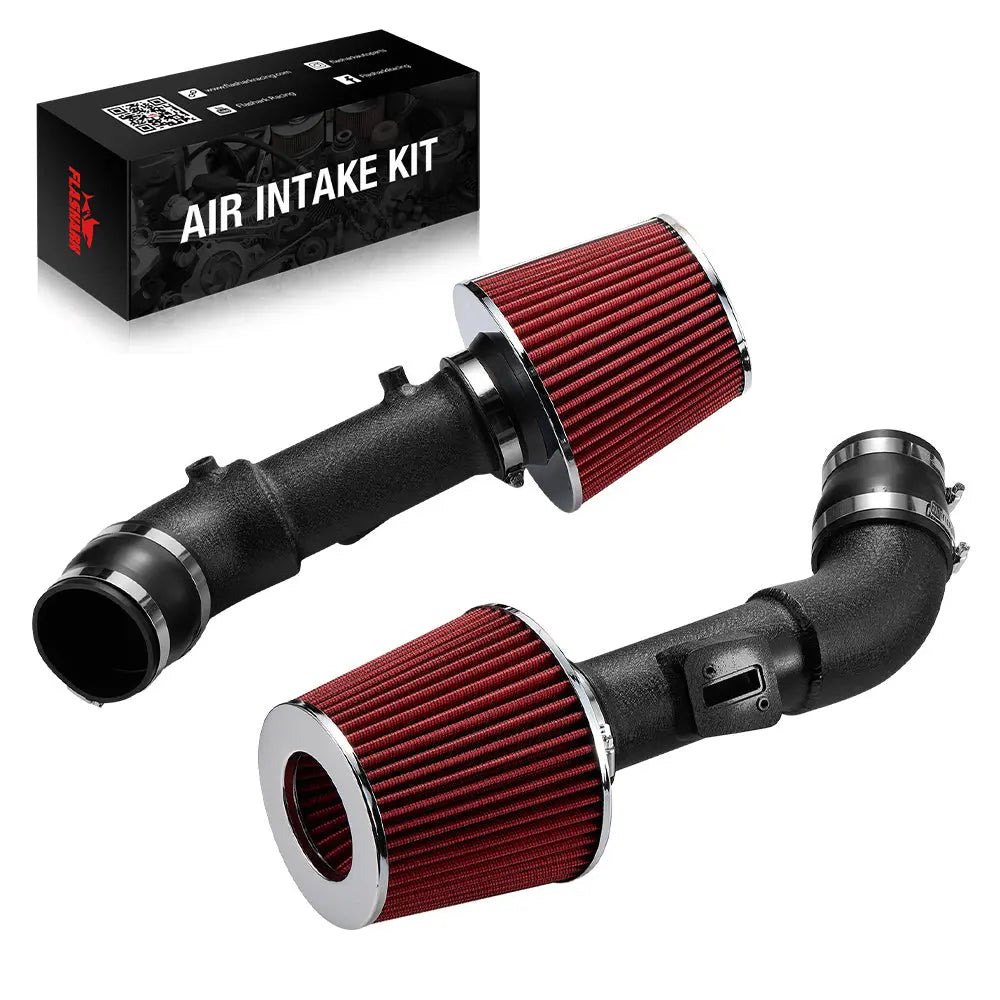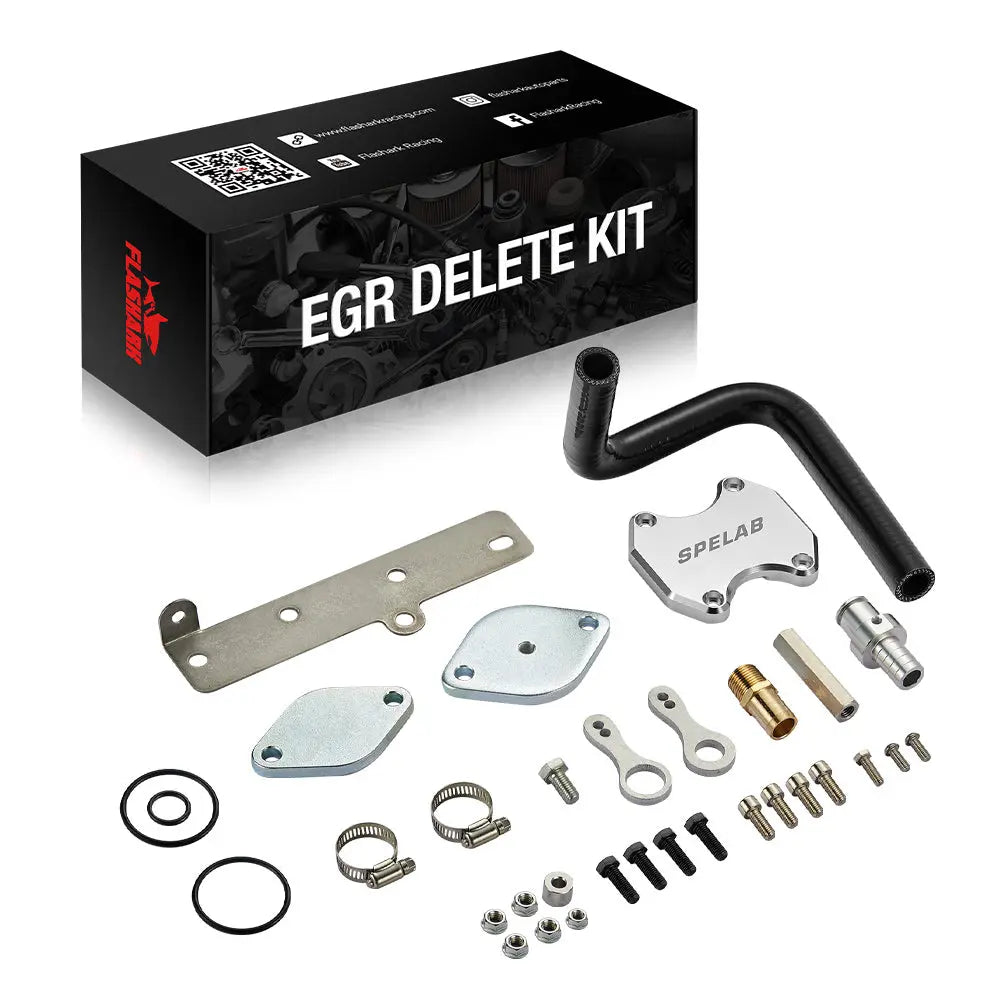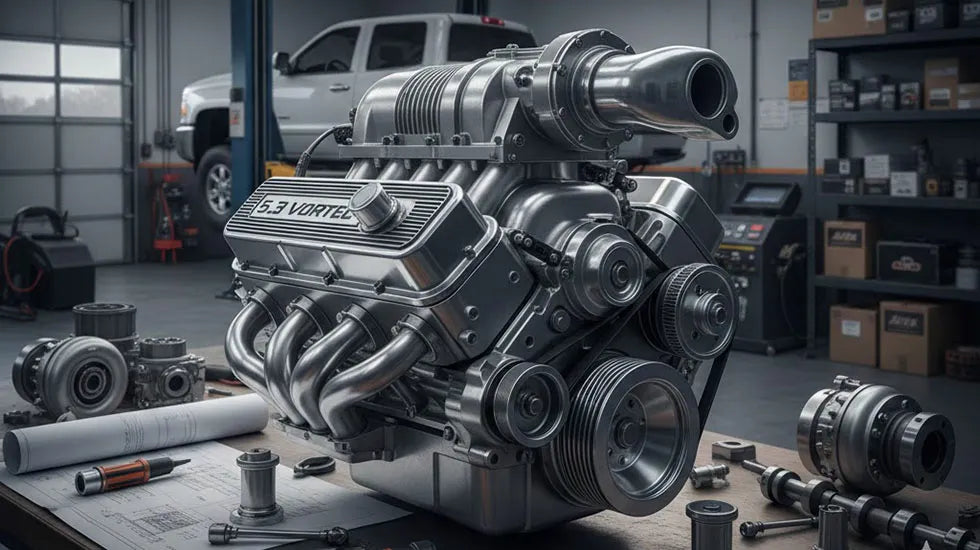Los colectores de escape son una mejora de rendimiento muy popular para los motores LS, especialmente el 5.3L. Tanto si buscas más potencia como si simplemente quieres un sonido de escape más profundo, los colectores pueden ofrecer mejoras notables. Pero ¿cuánta potencia añaden realmente a un motor 5.3L? Analicémoslo.
Comprender la plataforma del motor LS de 5.3 litros
El motor LS de 5.3 litros, especialmente las variantes Gen III y Gen IV como el LM7, el L59 y el LC9, es uno de los favoritos entre los entusiastas. Impulsa millones de camionetas y SUV de GM y se ha convertido en una opción predilecta para las conversiones a motor LS.
De fábrica, la mayoría de las variantes de 5.3L generan entre 270 y 320 caballos de fuerza al cigüeñal. Si bien son confiables y ofrecen un buen torque, estos motores tienen margen de mejora en cuanto al flujo de aire y los gases de escape.
¿Qué son los encabezados y cómo funcionan?
Los colectores de escape sustituyen los colectores de escape originales por tubos individuales con ajuste específico. Ayudan al motor a expulsar los gases de escape de forma más eficiente, reduciendo la contrapresión.
Los colectores de escape de tubo corto son compactos y más fáciles de instalar. Los colectores de escape de tubo largo son más grandes y mejoran el barrido de gases, especialmente en el rango medio y alto de revoluciones. Esta eficiencia se traduce en mayor potencia y par motor.
¿Cuántos caballos de fuerza pueden agregar los colectores de escape a un motor 5.3?
Los colectores de escape pueden marcar una diferencia notable en la potencia de un motor LS de 5.3 litros. Si bien los resultados varían según el tipo de colectores y si el vehículo está modificado, la mayoría de las mejoras se encuentran dentro de rangos de rendimiento predecibles.
Ganancias de los colectores de tubo largo
En un motor de serie o ligeramente modificado, los colectores de escape de tubo largo para motores LS de 5.3 litros suelen añadir entre 15 y 30 caballos de potencia a las ruedas . Estas mejoras son significativas y reales, respaldadas por resultados de pruebas en dinamómetro realizadas por la comunidad y por ensayos de aficionados.

El diseño de los tubos largos mejora la evacuación de los gases de escape, especialmente a altas revoluciones. Esto se traduce en una mejor respuesta del acelerador y una mayor potencia a medio régimen.
Ganancias del colector de tubo corto
Los colectores de escape de tubo corto para motores LS de 5.3 litros pueden ofrecer aumentos de potencia más modestos, generalmente entre 5 y 15 caballos . Son más fáciles de instalar y suelen ser más económicos, lo que los hace atractivos para preparaciones sencillas.

Sin embargo, los tubos cortos no ofrecen el mismo potencial de rendimiento a altas RPM en comparación con los tubos largos.
El papel de la sintonización
Una correcta puesta a punto de la ECU es esencial para maximizar la ganancia de potencia que se obtiene con cualquier mejora en el sistema de escape. Sin esta puesta a punto, el motor no aprovechará al máximo el flujo de escape mejorado.
La puesta a punto también garantiza relaciones aire/combustible óptimas y ayuda a eliminar posibles problemas como la luz de control del motor debido a cambios en el sensor de O2.
Mejoras de rendimiento adicionales con mods compatibles
La instalación de un árbol de levas de alto rendimiento junto con colectores de escape puede aumentar significativamente la potencia. Por ejemplo, un árbol de levas de etapa 2 o etapa 3 puede añadir entre 40 y 60 caballos de fuerza.
Algunas pruebas realizadas por la comunidad han demostrado que los motores LS de 5.3L de serie pueden ganar más de 100 caballos de fuerza con tan solo un árbol de levas, colectores de escape de tubo largo y una puesta a punto. No fue necesario modificar la admisión ni la culata.
Una puesta a punto adecuada es fundamental. Sin ella, el motor no aprovechará al máximo las mejoras en el flujo de aire.
Consideraciones de instalación para los colectores en un motor 5.3
Los colectores de escape no son una modificación sencilla para cualquier vehículo. Los colectores de escape de tubo largo pueden requerir modificaciones en el sistema de escape. El espacio libre puede ser un problema en camionetas con tracción en las cuatro ruedas o compartimentos de motor reducidos.
También tendrás que reubicar o extender los cables del sensor de oxígeno. En algunos estados, los colectores de escape de tubo largo pueden afectar el cumplimiento de las normas de emisiones. Consulta siempre la normativa local antes de la instalación.
Coste frente a rendimiento: ¿Merecen la pena los colectores de escape?
Los precios de los colectores de escape oscilan entre los 300 y los más de 1000 dólares, según la marca y el material. La instalación y la puesta a punto pueden suponer un coste adicional de entre 500 y 1000 dólares.
Cuando se instalan y ajustan correctamente, los colectores de escape ofrecen una de las mejores mejoras en relación potencia/precio para un motor LS de 5.3L. Además, sientan las bases para futuras modificaciones como el cambio de árboles de levas y la inducción forzada.
Si estás planeando una configuración de alto rendimiento, los colectores de escape son una inversión que vale la pena.
Conclusión
¿Cuántos caballos de fuerza añaden los colectores de escape a un motor 5.3? Con colectores de escape de tubo largo y una reprogramación de la ECU, se pueden esperar entre 15 y 30 caballos de fuerza adicionales. Si se combinan con un árbol de levas, es posible obtener ganancias de entre 70 y más de 100 caballos de fuerza.
Los colectores de escape mejoran la eficiencia, el sonido y la potencia del motor. Para cualquier propietario de un motor LS de 5.3L que busque optimizar su rendimiento, son un excelente primer paso, respaldado tanto por datos de dinamómetro como por resultados en condiciones reales.
¡Última oportunidad! ¡Los descuentos por tiempo limitado de FlashArk Racing ya están aquí!
¡No te pierdas estas ofertas exclusivas! FlashArk Racing tiene increíbles promociones por tiempo limitado para que mejores tu equipo y accesorios de carreras a precios imbatibles. Consulta nuestros descuentos actuales:
- 10% de descuento adicional en todos los colectores de escape
- 11% de descuento adicional en todos los sistemas de escape Catback
- 12% de descuento adicional en todos los escapes con tubo de bajada
- 11% de descuento adicional en todos los convertidores catalíticos
- 13% de descuento adicional en la entrada de aire frío
- 15% de descuento adicional en el tubo de eliminación de DPF y catalizador
¡Date prisa, estas ofertas son por tiempo limitado! Haz clic en el enlace de abajo para conseguir tu descuento ahora mismo:
👉 ¡ Haz clic aquí para visitar la página de descuentos de Flashark y reclamar tu oferta!

